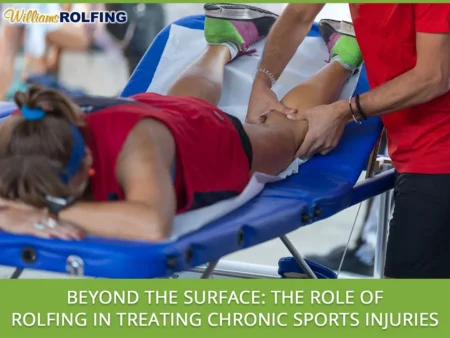October 14, 2025

Understanding Chronic Sports Injuries
In Tampa, active communities built around sports such as pickleball and tennis often face a recurring issue: chronic injuries that linger despite traditional care. Conditions like tennis elbow can persist for months or even years, frustrating athletes who follow standard treatment plans without achieving lasting relief. Repetitive strain, improper movement patterns, or gradual muscular imbalances often cause these injuries. While conventional therapies usually focus on relieving immediate discomfort, they may not address the structural patterns that contribute to recurring pain.
Rolfing offers a different perspective. Rather than treating surface symptoms alone, it examines the body’s entire structure to uncover the underlying causes of chronic issues. This method utilizes connective tissue to bring the body into better alignment, which can reduce strain on injured areas and enhance overall movement efficiency.
How Rolfing Works
Rolfing, also known as structural integration, focuses on the fascia, the connective tissue that surrounds muscles, bones, and organs. Repetitive motions, injuries, or incorrect posture can cause this tissue to become tight or misaligned over time. These limitations can change how you move, which can cause other parts of your body to compensate and create a cycle of chronic pain.
Rolfing practitioners use their hands to release tight areas in the fascia. This process restores the body’s structure to balance, allowing muscles and joints to function correctly. The sessions typically include a series of treatments that target different parts of the body over time, promoting integration throughout the entire body rather than just the injured area.
Addressing the Root Causes
Rolfing is excellent because it can relieve pain in multiple areas. For instance, a tennis player with an elbow injury may experience tightness in their shoulders or upper back, which can cause their forearm to work harder as a result. A pickleball player who has knee pain that keeps coming back may also have problems with their hips or ankles that change the way they walk and put more pressure on their joints.
Rolfing practitioners can identify and address these patterns by examining the body as a whole. This method reduces the risk of re-injury by addressing structural issues rather than merely masking the symptoms.
Supporting Recovery and Performance
Rolfing can help traditional rehabilitation methods by improving alignment and restoring efficient movement. Muscles can work better, and joints don’t have to work as hard when fascia restrictions are released. This often makes it easier to move around, reduces pain, and enhances your body awareness.
Athletes recovering from long-term injuries may also experience improvements in their performance. When your body is aligned correctly, your movements will be smoother and more coordinated. This can make strokes, serves, and quick changes of direction more effective. This could mean that pickleball players have more control over their shots and experience less fatigue during games. For tennis players, it can mean improved swing mechanics and reduced stress on vulnerable areas, such as the elbow or shoulder.
Rolfing for Repetitive Strain
Repetitive strain is the cause of many long-term sports injuries. Over time, the body learns to adapt to repetitive movements by developing specific patterns of tension and compensation. If you don’t deal with these patterns, you may still feel pain even after resting or getting temporary relief. Rolfing can help break these cycles by realigning the body and teaching it to move more naturally.
This can be particularly helpful for athletes who train or play year-round, as it resets their structure and helps them stay strong over time. Rolfing is different from other treatments that only focus on relieving pain. It attempts to alter how the body functions, which can reduce the risk of injury recurrence.
A Holistic Approach to Healing
Rolfing sees the body as a whole. Instead of separating muscles or joints, it works to bring all parts back into balance. This all-encompassing view often appeals to athletes who have tried many treatments without success. Rolfing can help you heal in a more complete and long-lasting way by addressing both local pain and the body’s overall structure.
Bringing It All Together
For athletes in Tampa dealing with persistent sports injuries such as tennis elbow or pickleball-related strain, Rolfing offers an approach that goes beyond surface treatment. By focusing on the fascia and overall body alignment, it addresses underlying structural issues that contribute to chronic pain. This method supports not only recovery but also improved movement and performance.
For professional guidance in using Rolfing to treat chronic sports injuries, consider working with Williams Rolfing, where experienced practitioners focus on helping athletes restore balance and function through structural integration.
Picture Credit: Depositphotos
